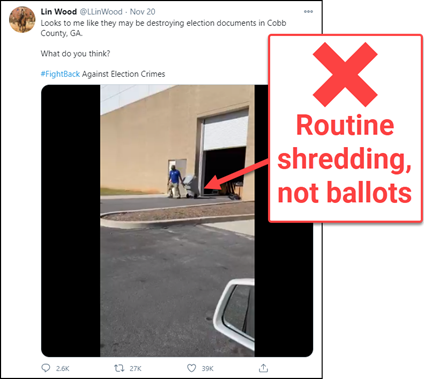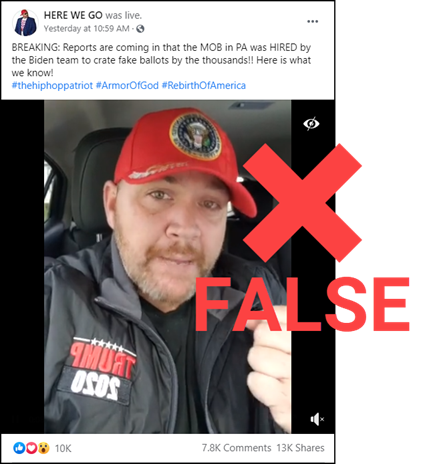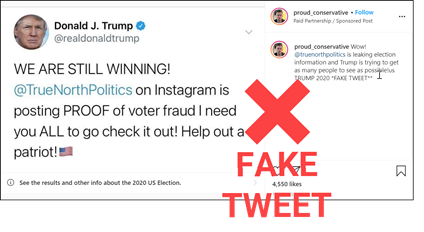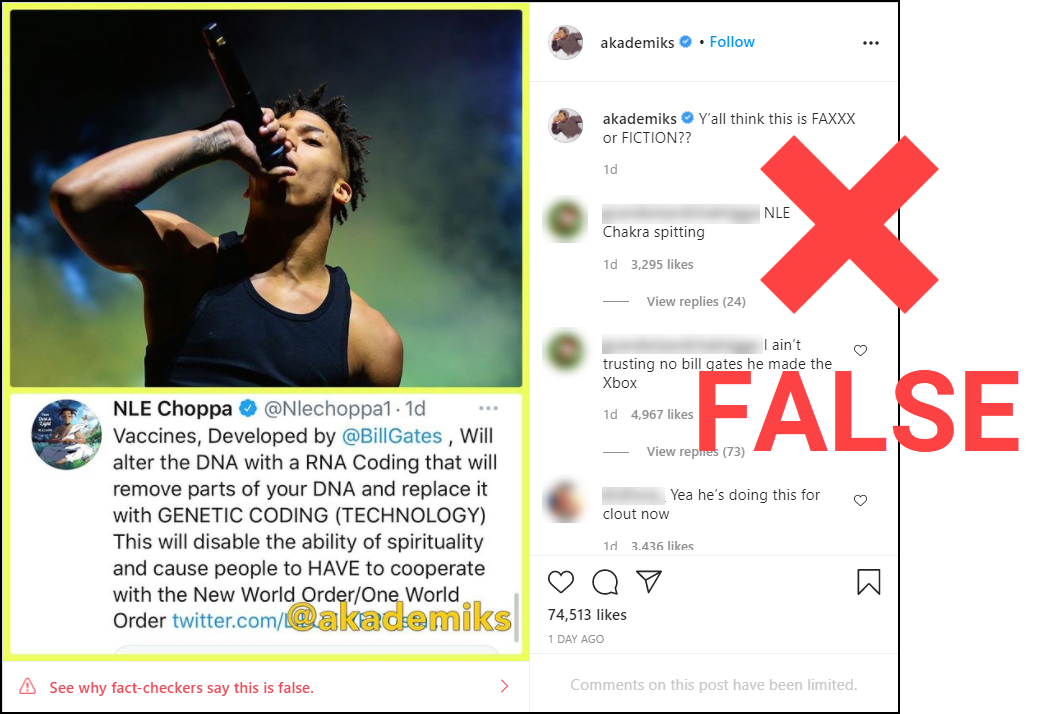The Sift: Be factful | Vaccine misinformation | COVID-19 comics
|
|
Teach news literacy this week |
|
|
Be factful The Centers for Disease Control and Prevention on Nov. 19 published updated recommendations for safely celebrating Thanksgiving during the pandemic. But COVID-19 isn’t the only viral threat people are contending with this holiday season. Baseless rumors and conspiracy theories about voter fraud in the presidential election have been spreading for months, leading many Americans to see “evidence” of fraud on and after Nov. 3 where none existed. This happened with ballot applications misperceived as actual ballots; misinterpreted video clips of workers dutifully counting votes; misguided amateur investigations of election center trash; and misconceptions surrounding when and how results are reported.
|

|
|
Viral rumor rundown  NO: This video does not show any ballots or other election documents being secretly or improperly shredded in Cobb County, Georgia, following the Nov. 19 completion of a state-ordered recount of votes in the presidential election. YES: It shows “non-relevant materials” that contain voters’ personal information — such as mailing labels and envelopes, sticky notes and phone messages — being taken to a mobile shredding truck outside a county event center in Marietta, where the recount took place. NO: This is neither a crime nor unusual. YES: The Cobb County elections department released a statement confirming that “everything of consequence, including the ballots, absentee ballot applications with signatures, and anything else used in the count or re-tally remains on file.”  NO: President-elect Joe Biden’s campaign did not hire the mafia in Philadelphia to fabricate fraudulent ballots. YES: This is a baseless claim that originated in an unsigned, evidence-free article in The Buffalo Chronicle, a news site with a history of publishing right-wing conspiracy theories.  NO: The image in this Instagram post is not an authentic tweet from President Donald Trump. YES: It is an image of a fabricated tweet shared by an account claiming to be a paid ambassador of the conservative student group Turning Point USA.  NO: The COVID-19 vaccines that are currently in development will not alter people’s DNA. YES: These vaccines are “mRNA” vaccines, which use a fragment of genetic material from the virus rather than a weakened or killed version of the virus, to produce an immune response. NO: There is no conspiracy to use the COVID-19 pandemic to establish an authoritarian world government. YES: Such claims are part of a sprawling, decades-old “New World Order” conspiracy theory.
|
 After news broke Nov. 16 that early data showed a vaccine from the drugmaker Moderna was nearly 95 percent effective, fans of American singer-songwriter Dolly Parton praised her $1 million donation to help fund COVID-19 vaccine research. Major news organizations including The Washington Post, The New York Times, CNN and BBC News covered the story. |
|
★ Sift Picks  Featured “A Tale of Two Pandemics: Historical Insights on Persistent Racial Disparities” (Josh Neufeld, Journalist’s Resource). Quick Picks “Designed to Deceive: Do These People Look Real to You?” (Kashmir Hill and Jeremy White, The New York Times).
“News Distrust Among Black Americans is a Fixable Problem” (Tamar Wilner, Gina M. Masullo, Danielle Kilgo and Lance Bennett, Center for Media Engagement, The University of Texas at Austin).
“How much political news do people see on Facebook? I went inside 173 people’s feeds to find out” (Laura Hazard Owen, Nieman Lab).
|
|
What else did we find this week? Here's our list. |
|
Thanks for reading! Your weekly issue of The Sift is created by Peter Adams (@PeterD_Adams), Suzannah Gonzales and Hannah Covington (@HannahCov) of the News Literacy Project. It is edited by NLP’s Mary Kane (@marykkane). |
|



